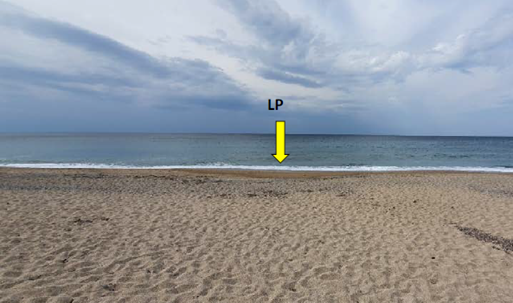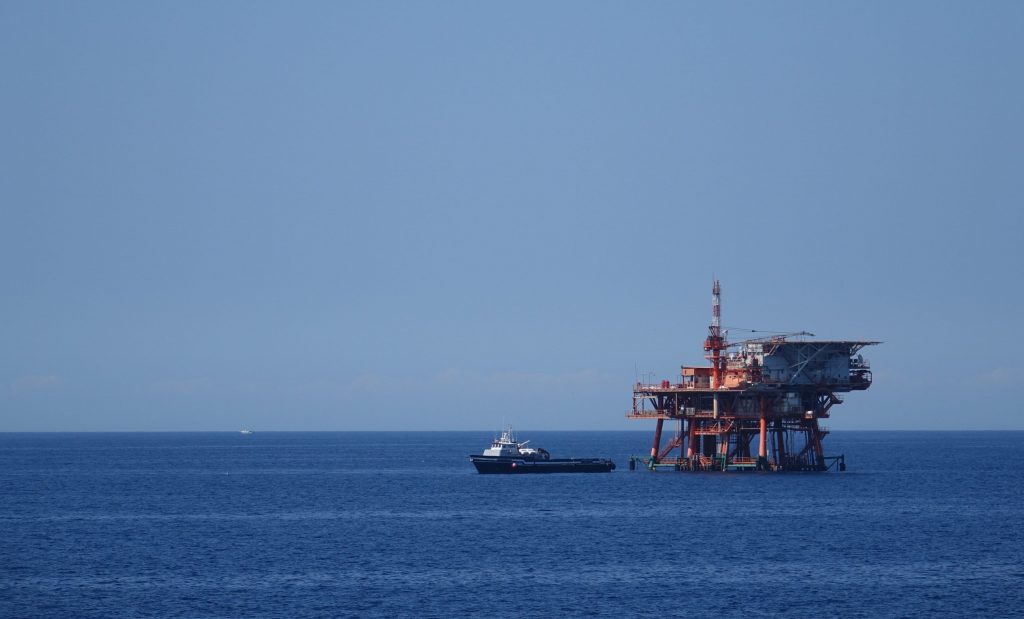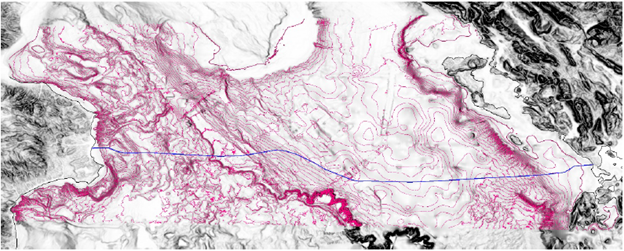We can easily imagine that, when planning the construction of a motorway, one needs to garner information about the features along the route: maps, topography, geology, vegetation and wildlife, existing infrastructures and human activities along the path… Well, things are not so different when planning a submarine cable route, where you will encounter similar features like ridges, canyons, cliffs, plateaus, basins or meadows. There are no cities underwater (yet), but people navigate, fish, perform military maneuvers and extract oil and gaz. A whole submarine landscape that is usually not visible to us needs to be thoroughly studied to design the route of the cable. This is done in two main steps: first with a Desktop Study that will define the route and then Marine Survey that will further refine it with very detailed measurements.
The Desktop Study (DTS)
Prior to the Marine Survey, the purpose of the DTS is, based on existing information, to determine the best a-priori route for the submarine cable. The main outcome of the DTS is the Survey Cable Reference Route (SCRR), that is defined based on the following considerations which are also part of the DTS:
- The areas of the landing are surveyed to determine the exact landing points, in Italy and Greece in our case. The DTS includes reports of these surveys that will provide valuable information for the landing operations and for the construction of the terrestrial landing infrastructure.

- A general bathymetry informs us about the depth of water at each point of the cable route. As a simple rule, the deeper the waters the better, as the cable will be further from human activity and the associated risks. As a rule of thumb, when the depth is more than 1,000 meters the cable does not require extra protection such as armoring and burial. Another requirement is that the cable must rest on the seabed, avoiding suspensions: tensions would cause it to deteriorate prematurely, so features such as excessively steep slopes must be avoided.
- A General Geology will inform about the nature of the seabed. Sandy or muddy areas are most suitable and rocky outcrops must be avoided when the cable requires burial. Landslides, turbidity currents, earthquakes, volcanoes… all of them can deteriorate or even cut the cable.
- Oceanography: sea currents and tides. Information on wind and waves will be required to plan the marine operations.
- Climate: weather events (including extreme ones such as cyclones) have to be considered.
- Restricted and Protected areas will be identified and, when possible, avoided in the design of the SCRR: same as in the terrestrial world, we must be mindful of any impact on flora and fauna. Along the route, we will encounter meadows of Posidonia and Cymodocea. Although the installation of submarine (telecommunication cables) does not cause much environmental impact, some mitigation and compensation measures may be required by the authorities.

- Analysis of human activities such as shipping, trawling, fishing farms, exploration, extraction, construction, military maneuvers and the existence of utilities along the cable route. When possible, crossing the areas where such activities take place will also be avoided since, in addition to complicating the construction project, and requiring specific coordination and permitting, human activities are the main source of hazards for the cable. Specific events will be identified: pipelines, existing cables, wrecks… Also, archaeological areas have been avoided when selecting the landing points.

Hereafter is an excerpt of the SCRR of IONIAN (the exact location information has been hidden for the sake of confidentiality):

Each point in this table corresponds to turning points (numbered), but also singularities: we see that between points 16 and 17 there are two such features. First is the crossing of an Out of Service cable (X_Cable_OOS), and then the crossing of the Exclusive Economic Zone (EEZ[1]) limit between Italy and Greece.

In addition to determining the SCCR and a thorough analysis of each of the aspects listed above, the DTS will also provide a complete list of all the permits that will be required for the project. These are split into two broad groups: Permits in Principle that somehow validate the design of the project and grant any concession of authorize the use of public domain and Operational Permits that are required for specific activities such as the route survey, the laying of the cable and works beach during shore end operations.

